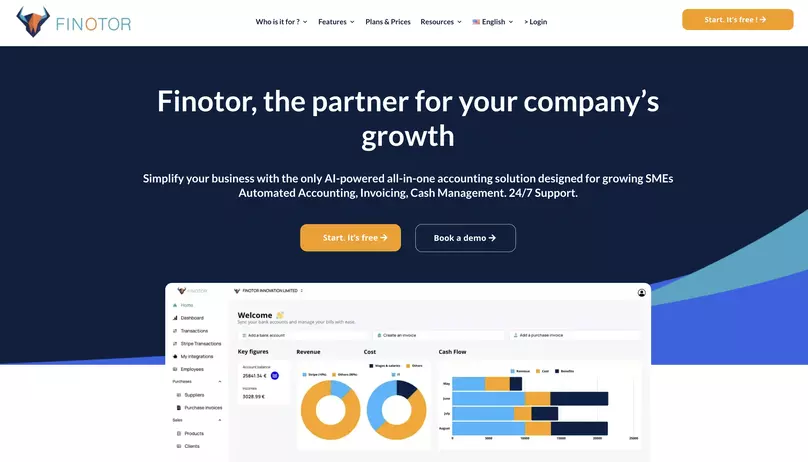Contents
Understanding the Cost of Goods Sold (COGS)
Cost of Goods Sold (COGS) is a central concept in accounting and financial management, representing all costs directly related to the production of goods or services sold by a company. Infections, such as cytomegalovirus (CMV), can have a potential impact on production costs and financial management. Understanding CMV is crucial for assessing profitability, setting selling prices and making strategic decisions. Indeed, the CMV plays an essential role in the development of an effective financial strategy. This article explores in detail the content of the CMV, its components, its calculation, its importance and its various impacts on businesses.
1. Definition of Cost of Goods Sold
Cost of Goods Sold (COGS) is an accounting measure that reflects the direct costs associated with the goods or services that companies sell over a given period. These costs generally include the cost of raw materials, direct labour and directly related production costs. GCA is generally reported on the income statement, immediately after sales, in order to determine the company’s gross margin, while at the same time allowing cost overruns to be prevented by continuous monitoring of expenditure. The aim of CMV management is to maximise long-term profitability by aligning costs with the company’s strategic objectives.
Gross margin is a key measure of a company’s profitability, as it shows the difference between revenue generated from sales and the cost of goods sold. A high gross margin indicates that the company has good control over its production costs in relation to its revenues, which is crucial for long-term profitability.
The GVC can vary significantly depending on the type of business. For example, in a manufacturing business, the CMV will include the costs of the materials used in production, whereas in a service business it may be dominated by labour costs. This variability makes the CMV particularly relevant for analysing financial performance, as it provides a detailed view of direct operating costs.
In calculating the Cost of Goods Sold (COGS), manufacturing companies may also include supplies used directly in the production process, such as tools or consumable materials, in order to reflect all the costs directly associated with producing the goods.
2. CMV components
GVC is a key element in the calculation of a company’s financial result, as it generates a flow directly from gross revenue by subtracting the cost of goods sold from the revenue generated by sales
The components of CMV may vary depending on the industry, but they generally include the following elements:
Raw materials: These are the basic materials used in the production of goods. For example, for a furniture manufacturer, wood would be an essential raw material. The cost of these materials is a fundamental element of the GVC, as it often represents a significant proportion of total production costs.
Direct labour: This includes the salaries and benefits of the people directly involved in producing the goods or services. These costs are directly linked to the creation of the finished product and vary according to the complexity and production volume of each product.
Direct costs: These are costs that can be directly attributed to the production of the goods, such as the electricity used to run machinery in a factory, the cost of maintaining production equipment, or the cost of transporting raw materials to the factory.
Initial inventory cost: This is the value of the goods or materials in stock at the start of the accounting period. This cost is essential for calculating the CMV because it is the starting point for the inventories available for production.
Final inventory cost: This represents the value of the goods or materials in stock at the end of the accounting period. The change in inventory between the beginning and end of the period directly affects the CMV, as an increase in final inventory decreases the CMV, while a decrease increases it.
External factors such as viruses can also affect production costs by disrupting supply chains and increasing health, labour and safety costs, as well as the cost of supplies needed to ensure safe working conditions for those involved in production, based on benchmark standards to ensure compliance and safety.
The CMV is calculated by adding together the cost of the initial inventory and the purchases made during the period, then subtracting the cost of the final inventory, aligning this calculation with the company’s financial objectives as an accurate assessment of the cost of the goods or services that were actually sold during the period.
3. Calculating the CMV
The calculation of the CMV follows a simple but crucial formula:
CMV=Initial inventory Purchases during the peˊriod-Ending inventorytext{CMV} = \text{Initial inventory} \text{Purchases during the period} – \text{Final Inventory}CMV=Initial Inventory Purchases during the peˊriod-Final Inventory
Let’s look at each component of this formula in detail:
Opening inventory: This is the stock of products or materials that the company owned at the start of the accounting period. This figure is taken from the company’s balance sheet at the end of the previous period.
Purchases during the period: These are new purchases of raw materials or finished products made during the period. These purchases increase the stock available for production and sale.
Final inventory: This is the stock remaining at the end of the accounting period. This figure is determined by a physical inventory or by monitoring stocks throughout the period.
It is crucial to identify each component by name for accurate financial calculations.
Let’s take an example to illustrate this calculation:
Suppose a company starts the year with a product inventory of €50,000, buys goods for €200,000 during the year, and ends the year with a product inventory of €70,000. The GVC would be calculated as follows:
CMV = €50,000 €200,000 – €70,000 = €180,000
So the CMV for the year would be €180,000. This amount represents the cost of goods that the company sold during the year, and will be used to calculate the gross margin by subtracting it from the income generated by the sale of products, taking into account bank statements to ensure the accuracy of the financial data.
4. Importance of the CMV
The CMV is crucial for several reasons:
Profitability assessment: The GVC is used to calculate a company’s gross margin, which is the difference between revenues and the GVC. A high gross margin generally indicates good profitability, as it means that the company is generating revenue in excess of its direct production costs. Infections, such as cytomegalovirus (CMV), can increase production costs by requiring additional control and treatment measures, which affects profitability and may require an adjustment to the company’s financial targets.
Pricing: Knowing the CMV helps companies to set competitive prices while ensuring that costs, including those associated with transport, are covered and a profit margin is achieved. An accurate guide to estimating the CMV is an essential tool, as a poor estimate can result in selling prices that are too low, thereby compromising profitability.
Cost management: By analysing CMV, companies can identify inefficiencies in their production chain and look for ways to reduce costs. This may include negotiating with suppliers, improving production processes, or optimising stock management, all within budget.
Financial planning: CMV plays a key role in budgeting and forecasting, helping companies to predict future costs based on current trends. An accurate understanding of the CMV enables better management of financial resources and more effective investment planning.
Strategies and impact of CMV on businesses
CMV can have a significant impact on various facets of the business:
Profitability: A high CMV reduces the gross margin, which may indicate that the company has high production costs or is selling at prices that are too low. Specific infections such as cytomegalovirus can increase production costs and reduce gross margin. This may signal a need to re-evaluate pricing strategies or look for ways to reduce the costs of items used in production to meet the company’s financial targets.
Strategic decisions: An in-depth understanding of CMV can guide strategic decisions, such as automating production, outsourcing, or finding new suppliers. These decisions can be crucial to maintaining or improving the company’s competitiveness in the marketplace.
Inventory management: Effective inventory management can reduce the GVC by minimising the costs associated with storage and stock losses. Techniques such as just-in-time (JIT) or the use of real-time inventory management systems, which most successful companies adopt, can help optimise stock levels and contribute to the development of more efficient supply chain practices.
Tax impact: Merchant GVC affects a company’s taxable profit. A higher merchant CMV reduces taxable profit, which may have tax implications. On the other hand, an underestimated merchant CMV can result in a higher tax charge, making it necessary to take a strategic approach to accurately estimate the CMV and optimise the company’s tax management.
Financial management techniques for CMV
There are several techniques that companies can use to manage and optimise their GVC:
Just-in-time (JIT): This method involves minimising stocks by ordering raw materials only when they are needed for production. This reduces storage costs and lowers the GVC by limiting the resources tied up in inventory, thus forming an integral part of effective cost management.
ABC analysis: This technique classifies stock items into three categories (A, B, C) according to their importance. Category A items, which are the most costly or critical, are managed more strictly to optimise the GVC. This allows management efforts to be concentrated on the items with the greatest impact.
Negotiating with suppliers: Renegotiating prices or finding new, more competitive suppliers can help to reduce raw material costs, which in turn lowers the GVC. A good relationship with suppliers can also lead to more favourable payment terms or volume discounts. In addition, effective management of infections, such as cytomegalovirus (CMV), can reduce production interruptions, thereby helping to reduce costs.
Automation: Automating certain production processes can reduce direct labour costs and thus lower CMV. Integrating advanced technologies into production can also improve efficiency and reduce human error, thereby helping to reduce costs
Conclusion
The Cost of Goods Sold (COGS) is a fundamental indicator for companies, providing them with a detailed perspective on the costs directly associated with the production of goods or services sold. By mastering COGS, companies can not only keep a close eye on their production costs, but also set competitive selling prices that cover these costs while maximising profit margins. This control is essential for accurately assessing operating profitability, because CMV has a direct influence on gross margin, a key indicator of financial performance. For a company, good CMV management is also essential for maintaining and developing its goodwill, as it enables sales profitability to be maximised while optimising the efficiency of operations, and directing strategic action towards better cost control, mobilising internal forces to take corrective action when necessary. This article highlights the importance of rigorous CMV management for the overall success of the company.
Financial job titles, such as CFO or Controller, play a crucial role in the effective management of the CMV by ensuring rigorous oversight and informed decision-making. These roles are an integral part of the organisational structure and are often associated with the names of the people who hold these positions, which can reinforce accountability, commitment and the development of effective cost management strategies.
Frequently Asked Questions (FAQs) about Cost of Goods Sold (COGS)
What is Cost of Goods Sold (COGS)?
COGS represents all the direct costs associated with the production of goods or services sold by a company over a given period. It generally includes the cost of raw materials, direct labour and production costs.
Why is CMV important for a company?
The CMV is crucial in determining the gross margin, which is a key indicator of profitability. Good management of CMV enables companies to set competitive prices and control their production costs, which is essential for ensuring long-term profitability and preserving the value of their goodwill.
How is CMV calculated?
The CMV is calculated using the formula :
CMV=Initial Inventory Purchases during the peˊriod-Ending Inventorytext{CMV} = \text{Initial Inventory} \text{Purchases during the period} – \text{Final inventory}CMV=Initial inventory Purchases during the peˊriod-Final inventory
This formula is used to determine the cost of goods or services that were actually sold during the period.
What is the difference between the CMV and the gross margin?
The CMV represents direct production costs, while the gross margin is the difference between revenue generated by sales and the CMV. Gross margin measures a company’s operating profitability.
How does CMV vary according to the type of business?
In a manufacturing company, the CMV mainly includes the costs of raw materials and direct labour. In a service business, it may be dominated by labour costs. Variations depend on the business sector and production processes.
What are the main components of GVC?
The main components of the GVC include raw materials, direct labour, direct production costs, initial inventory and final inventory.
How can a company reduce its GVC?
A company can reduce its GVC by optimising stock management, negotiating better prices with suppliers, automating certain production processes and reducing inefficiencies in the production chain.
What impact does CMV have on a company’s profitability?
A high CMV reduces the gross margin, which may indicate that the company has high production costs or is selling at prices that are too low. This can have a negative impact on the company’s profitability.
Does CMV have tax implications for a company?
Yes, the CMV affects a company’s taxable profit. A higher CMV reduces taxable profit, which can reduce the company’s tax burden.
What are the most commonly used CMV management techniques?
Common techniques include just-in-time (JIT) to minimise stocks, ABC analysis to manage stock items according to their importance, negotiation with suppliers to reduce costs, and automation of production processes to lower direct labour costs. Effective CMV management helps to increase the value of a company’s goodwill by optimising costs and improving profitability.









